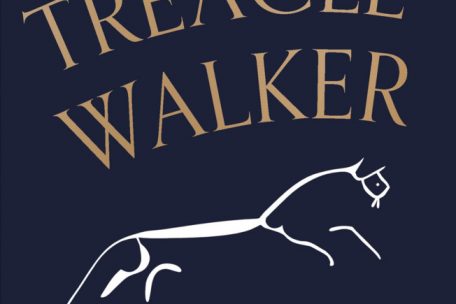Joseph Coppock is a small boy who lives on his own in a very small fictional world whose boundaries are set by a bog, a field, a meadow and the regular passing of the train Noony.
It is, or it could be, what Lubomir Doležel has called, in his essay „Heterocosmica“, a one-character fictional world: Joseph has no parents nor any other relatives, he squints at the world with his lazy eye, passes his days reading comics, playing with his marbles and collecting bird’s eggs. In short: he’s utterly alone, yet doesn’t seem to feel lonely.
The characters he meets throughout the novel seem to be figments of his minds, with Garner not really caring about what Tzvetan Todorov has called the „effet fantastique“, by which Todorov designates texts or (fictional) situations where the reader can’t be sure if what is happening is real or imagined by one of the characters.
In „Treacle Walker“ on the contrary, it doesn’t really matter whether people are real or whether things happen for good or not – it isn’t even relevant on what ontological level they take place, with daydreams, nightmares, fiction and reality being levelled to one and the same weird realm.
Recently, little Joseph Coppock „has been poorly“, which is why he’s happy to meet Treacle Walker, a very strange rag-and-bone-man appearing out of nothing – and regularly evaporating into nothingness again –, who trades a jar of cure-all-medicine and a donkey stone for a pair of pyjamas and a lamb’s shoulder blade – and who pretends to be able to heal all kinds of things, save for jealous, which he deems incurable.
After this initial encounter, Joseph walks into the woods behind his house and meets Thin Amren, a naked man wearing a leathered hood who tells him his lazy eye is actually a special gift which allows him to see things differently, more clearly. Speaking of special powers: things start to become even more surreal when Garner, in a classic yet efficient metalepsis, lets the zany characters of Joseph’s Knockout comic book invade his real or dreamt up world, with the likes of Kit the Ancient Brit, Whizzy Wizzard and the Brit Basher strolling and carousing through his house, words coming out of their mouths „in a bubble, just as they did in the comic“.
„Treacle Walker” takes its inspiration from the likes of Lewis Carroll – the references to „Alice in Wonderland“ are pretty obvious –, but also from Maurice Sendak’s „Where the Wild Things Are“, Jospeh suddenly discovering – or imagining – a world filled with weird yet touching creatures and characters –, as well as from the metaphysical prose of Jose Luis Borges, with different ontologies overlapping and Joseph plunging, in one of the most compelling chapters of the novel, in a series of worlds and mirrors, a bit as if Christopher Nolan had taken his stack of embedded world to a more vertiginous level, where entertainment and fiction meets metaphysics and time.
Speaking of time: The epigraph of the book reads „il tempo è ignoranza“, giving many a confused reader a hint what all this strange book might be about. At its end, Joseph Coppock asks Treacle Walker what it is that he wants for himself. The old man, astounded because „never has a soul asked that” of him, ends up replying: „To hear no more the beat of time. To have no morrow and no yesterday. To be free of the years.“
In a way, the small fictional world of „Treacle Walker“, with its redundant patterns, its recurring leitmotivs, its incantatory, nonsensical, childish language rich with neologism and distortions, its ritualistic objects, its ontology where dreams within dreams and mirrored realities overlap, is a lesson in freeing oneself from time’s linearity, its cruel arrow.
„Treacle Walker“ is as inventive as it is weird, Garner seeming to develop an allegory without giving us enough cues to decipher it, suggesting the reader should delight in its wild associative power rather than trying to make sense of what is actually going on – which, in a way, is a perfect allegory on time, reality and how we (should) perceive the world.
Was Sie auch noch interessieren könnte:
– On pangolins and pogroms: „The Seven Moons of Maali Almeida“ by Shehan Karunatilaka
– The ordinary part of us: „Small Things Like These“ by Claire Keegan
– Sortir de l’ombre: „Oh William!“ d’Elizabeth Strout
– „Something’s going on in the state of Mississippi“: „The Trees“ by Percival Everett
– Distorsions et manipulations: „Trust“ de Hernan Diaz

Info
„Treacle Walker“ by Alan Garner, 2022 4th Estate London, 152 pages, 8,99 £










Sie müssen angemeldet sein um kommentieren zu können